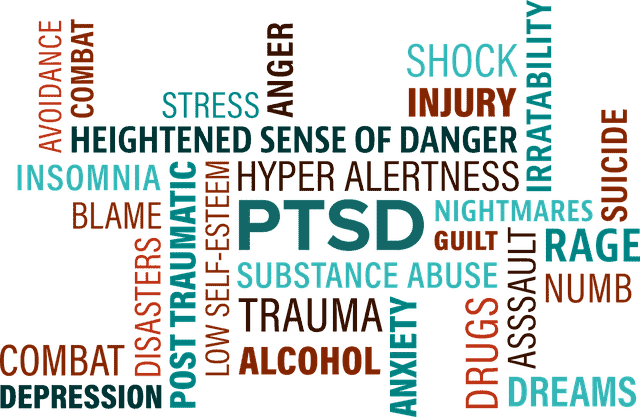Trauma can be a debilitating thing to experience. Some people manage to get over it; others struggle and remain stuck in psychological limbo after suffering trauma , despite their very best intentions to move on. What ways are there for dealing with trauma?
Many of the resources on this topic resort to very generic and vague answers to this question, like having support, living healthily, maintaining a normal routine and so on. These are all important and useful but with trauma it is important to drill down deeper and examine some resources which can really move the bar in people’s lives if they are struggling to move on.
In this sense, it is important not just to seek therapy, but the right kind of therapy, to properly recover. Conventional talk and cognitive therapy can help some, but it can also be ineffective for others, since talking alone can sometimes fail to access the trauma in a way that is truly beneficial and healing.
Similarly, more generic lifestyle advice can also be counterproductive and create a “chicken and egg” style dilemma, where the person wants to do these things but can’t bring themselves to. They need to move on to enjoy life again but just trying to enjoy life doesn’t help them move on. The trauma is still sitting inside them unprocessed.
In this cases, you need to look deeper than just conventional therapy or advice. We will explore EMDR as an alternative therapeutic method which can help heal trauma on a more radical and fundamental level. We will also look at some other approaches which have proven useful for some.
Let’s look in more detail at the nature of trauma and some of the different approaches which can be used to overcome it.
Symptoms of Trauma and PTSD
Trauma, and the more chronic condition of PTSD, can result from a person experiencing any life experience which is distressing and disturbing. This can range from the more obvious “Big T” traumas of war and combat experiences, violent assaults, car crashes and other near death experiences, right down the “Small T” traumas or unpleasant life events.
At some point, if the backlog of trauma in a person’s life becomes too much, then they will start manifesting PTSD style symptoms, where they remain “frozen” psychologically and struggle to move past the trauma.
This can lead to a whole host of knock on symtoms which can negatively affect a person’s ability to function in society and live the life they want to live. Some of the more common symptoms include:
- Depression
- Anxiety
- Rumination and preoccupation with the trauma
- Explosions of anger
- Flashbacks of the traumatic incident
- Hyper-alertness and hyper-vigilance
- Withdrawn nature and avoidant of others
- Avoidant of situations which remind you of traumatic event.
- Being easily startled by loud bangs or sudden movements.
- Inability to get enjoyment out of things they used to – numbed out psychologically.
- Physical symptoms, like sweating, nausea, trembling or shaking, headaches, tenseness etc.
- Loss of appetite.
- Insomnia and nightmares
- Problems with thinking, concentration and general day to day functioning.
- Feelings of guilt or blame in some cases.
There is a great deal of variability in different people’s ability to overcome and move past trauma. Some people do eventually manage to move on from these symtoms; others struggle and remain psychologically stuck for years in some cases. It can be as though the traumatic experience still happened yesterday even though it may have been years ago.
One contributing factor to this seems to be how much existing trauma the person is already carrying inside themselves. Many people seem to be able to get over one or two isolated traumatic experiences if they have had a pretty uncomplicated and smooth life so far.
People who already have a pre-existing burden of trauma from their early life who then go on to experience more trauma in later life are often the ones who get stuck with the more severe PTSD style symptoms which don’t seem to shift. It is as though the sheer amount of trauma inside them overwhelms them psychologically and starts to manifest in the symptoms associated with PTSD.
Let’s look at some approaches there are to deal with this kind of trauma.
James Alexander goes into the nature of trauma in detail
Conventional Therapy
Conventional therapy is sometimes effectively used to treat trauma, with cognitive behavioral therapy in particular being a fairly common treatment for trauma. This involved challenging the dysfunctional beliefs a person may have developed in the aftermath of trauma in the hope of changing them to develop healthier behavior patterns.
In this way the person is encouraged to try and develop better beliefs, habit and routines to live a life more beneficial to them, and move away from the more limited and closed off lifestyle that trauma can sometimes lead people to.
Cognitive Behavioral Therapy or CBT is usually a multi faceted approach which combines a number of different approaches to help the person develop a better lifestyle. This can include any or all of the following:
- Talking about the trauma and associated feelings and beliefs.
- Confronting any dysfunctional beliefs in the hope of changing them to healthier ones which are more self serving than self destructive.
- Emphasis on self care in various forms – such as proper diet, sleep, exercise, mindfulness meditation and so on.
- The developing of healthy routines and schedules with regular sleep, meals etc.
- Avoidance of drugs, alcohol and other chemicals which can make feeling of anxiety and depression worse.
- Development of support systems in the form of supportive, empathic, understanding people to help the process of recovery.
Taking these steps can be very effective in helping some people move past trauma in their lives. The development of support systems, self care and routines can lead to the person building a better lifestyle and getting out of the “rut” trauma can send them into.
We should add to this an important caveat though that the dysfunctional beliefs and conditions such as depression and anxiety which often accompany PTSD are themselves symtoms which stem from the underlying trauma, and not just end state conditions in themselves which have appeared from nowhere.
So many times when mental health conditions are delved into further, one finds that they actually stem from unresolved trauma and have not sprung up on their own. In these cases resolving only these conditions is resolving the symptom and not the cause which is driving them – the underlying trauma.
It can therefore be very helpful to look at treatment forms which target the underlying trauma itself and not just mental health conditions which stem from it like depression and anxiety. We will look into this in our section on EMDR further below.
Jordan Petersen on Dealing With Trauma & PTSD
One excellent resource on dealing with trauma is the renowned psychotherapist and public speaker Jordan Peterson. See the video just above for an excellent summary of his way of dealing with traumatic experiences and memories in the framework of therapy.
His approach on this is to rework the trauma in the person’s mind to such an extent that it no longer continues to bother them because they have assimilated all the lessons required from the experience to ensure they would not fall victim to the same trauma again.
Put simply, once you have learned the lessons you need to from the trauma, it no longer feels so much like trauma in the mind. This means picking apart the trauma bit by bit, and examining faulty beliefs and modes of thinking which led the person to invite the trauma in, or not take steps to avoid it happening.
This could be seen in any number of contexts. Here are a couple of examples of ways our thinking can be examined and reworked in relation to trauma:
- Being too open and trusting to people we don’t really know.
- Not having strong enough boundaries to put a stop to unacceptable behavior.
- Assuming that everyone in the world is basically good.
- Either not spotting red flags in a person’s character, or choosing to overlook or excuse them.
- Going into dangerous or hostile environments knowing they were dangerous without any protection or precautions; just assuming everything would be OK.
These are just a couple of endless different examples there could be. The goal is to thoroughly dissect any faulty beliefs which contributed to the trauma happening and change them to healthier beliefs which are more self serving in the sense of not drawning a person into traumatic events and relationships.
The goal here is to give the mind more options and clarity than it had the first time around, so that if the same thing were to happen again, you would be far better equipped to a) avoid it happening in the first place; and/or b) get out of toxic and traumatic situations much sooner if you do find yourself in them.
This approach admittedly may not work all the time, since some traumas are genuinely unexpected and uninvited. Sometimes people are traumatized by horrific assaults and accident that they were just caught up in being in the wrong place at the wrong time, and there was nothing they did to invite the trauma into their lives; it just happened and they were caught up in it.
In these cases there are other solutions like the use of EMDR and mindfulness that can be used. The Jordan Petersen approach perhaps works best for trauma in relation to toxic relationships in particular, something where the victim themselves definitely did make errors in judgement which they could learn from to avoid the same thing happening again.
The Problem With Talking and Rationality Alone
There is a problem with both these methods we outlined above. They are often trying to overcome the trauma with talking or reason alone. The idea behind cognitive therapy in particular is to challenge dysfunctional beliefs in the hope of changing them and developing healthier behavior patterns.
The very nature of trauma, particularly deep or prolonged trauma, can mean that this is sometimes not possible. This is especially the case if a person has suffered trauma earlier in life, was perhaps able to still somewhat function, but then experiences more severe trauma later in life that leave them completely incapacitated and “frozen” psychologically.
Put differently, experiencing trauma in adult life can re-trigger pre-existing unresolved trauma already dormant in the person and amplify the severity of the negative feelings a person experiences. Everything can all come back at once.
Severe trauma such as this can “lock” itself into the mind/brain and form an amnaesic or resistant barrier which is very difficult to access with logic, reason or talking alone. Trauma cannot understand these languages; it can only understand “itself”, so to speak. It is a visceral and real experience which cannot always be pinned down or responded to with words.
No matter how much the person talks about it or tries to change their beliefs, the trauma which drives these beliefs remains “stuck” in the body, demanding to be listened to. Psychologists such as the late Alice Miller observed this long ago – that the “body keeps the score” and severe trauma can remain stuck inside the person in a raw, undigested state for years in some cases.
In these cases conventional talk therapy or trying to “crush” the feelings of trauma which come up with reason or logic can be ineffective. There is simply too much in there to address it in these ways. Sometimes trauma can only be dealt with by being accessed and processed on it’s own terms.
Thankfully there is another form of therapy called Eye Movement Desensitization and Reprocessing or EMDR which is designed to do exactly that. Let’s look at this in more detail below.
EMDR as an Alternative Approach to Trauma
EMDR therapy takes a radically different approach to trauma to conventional talk therapy, in that it uses eye movements or other forms of bilateral stimulation to actually stimulate the mind/brain into processing or “digesting” the trauma.
There is not actually a lot of talking involved in this form of therapy. It is more designed to tap a person neurologically into past trauma and then use eye movements to stimulate the mind into processing this “re-awakened” trauma in the way it couldn’t at the time because it was too overwhelming.
Here a a very quick overview of the 8 steps involved in EMDR therapy. For more details on each step see our full article on how EMDR works.
- Client History – Identify target memories.
- Preparation – Prepare the client appropriately for the therapy.
- Assessment – Fully assess and evaluate target memories, feelings, beliefs etc.
- Desensitization – Use eye movements or other forms of bilateral simulation to process memories.
- Installation – Install positive beliefs about self to replace negative beliefs and affects associated with memories.
- Body Scan – Eliminate any remaining physiological symptoms with further bilateral stimulation.
- Closure – Return client to safe calm equilibrium as session ends.
- Re-evaluation – Check that all aspects of memory have been fully processed.
This form of therapy has a proven track record of dealing with all types of trauma, but can be especially effective in handling the more severe forms of trauma which other forms of therapy and self help have struggled to shift. As such it is officially recommended by the WHO as an effective therapy in the treatment of trauma.
If a person has experienced not just isolated traumas but has a history of trauma going back into their early years, then this form of therapy can be very helpful to them. It can be a systematic way to go back through the key traumatic experiences, revisit them in a safe, controlled environment with a greater sense of power and control, and process them to resolution using the EMDR framework.
Patients who complete this process report a much greater sense of detachment from their traumatic experiences, now viewing them as just another experience which does not distress them nearly as much. The emotional sting has been taken out of them. They are better able to move on with their lives.
For this reason EMDR is definitely something people affected by trauma in their lives should look into further. The excellent video below from EMDR practitioner Dr James Alexander goes through how the process works and the benefits it delivers to clients.
See here and here for the full presentations of Dr James Alexander from which these video clips were taken, which go into trauma and EMDR in more detail.
If you would like to pursue EMDR further, then see our Find a Therapist page for resources to help you find a qualified practitioner in your country and region.
See also:





